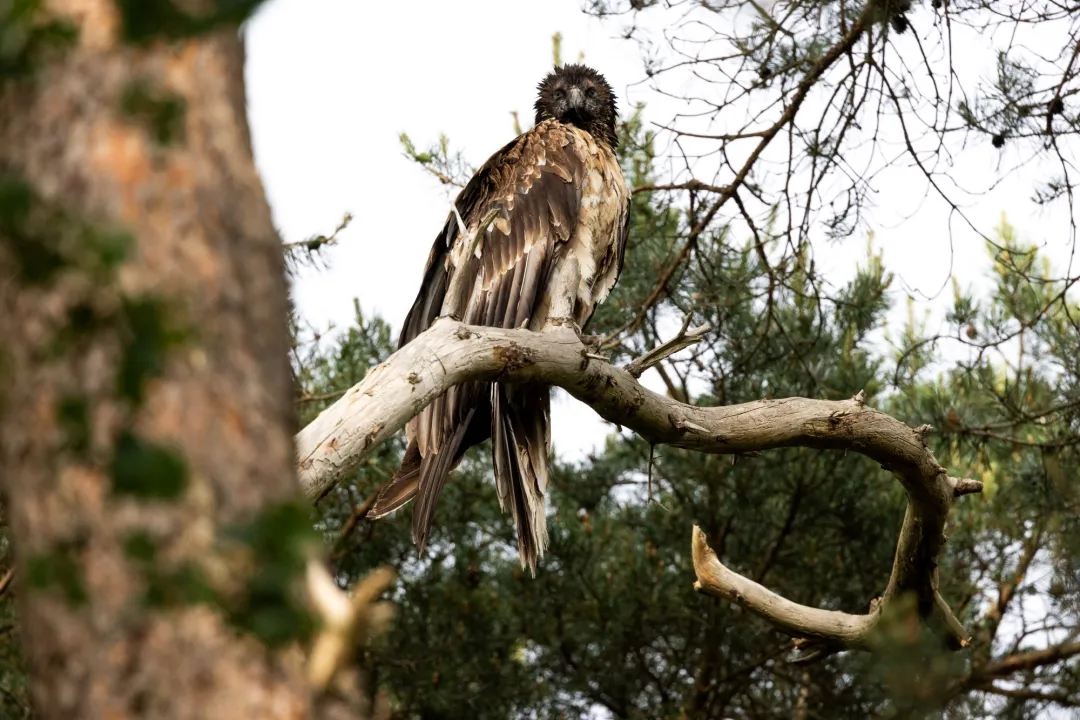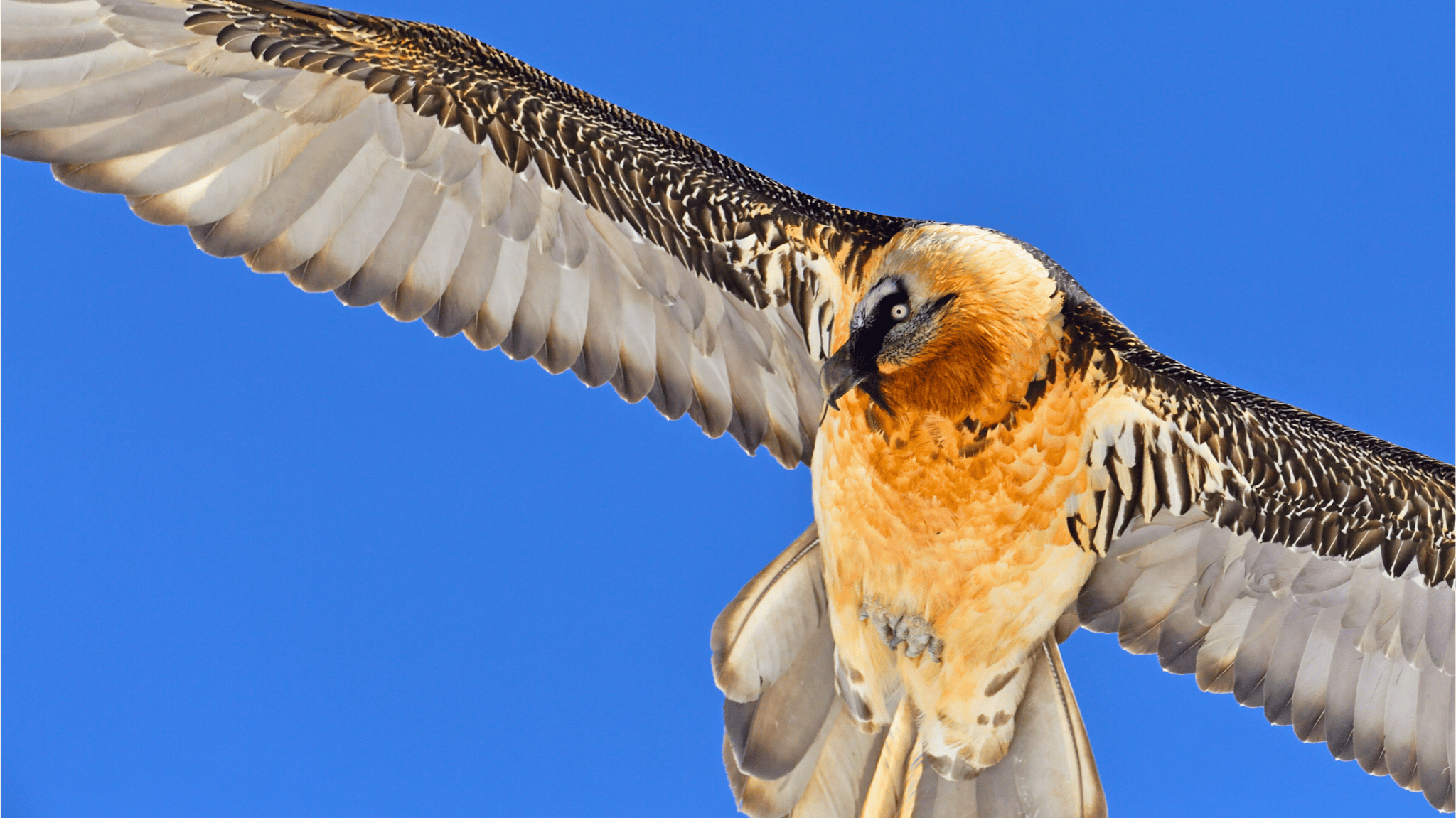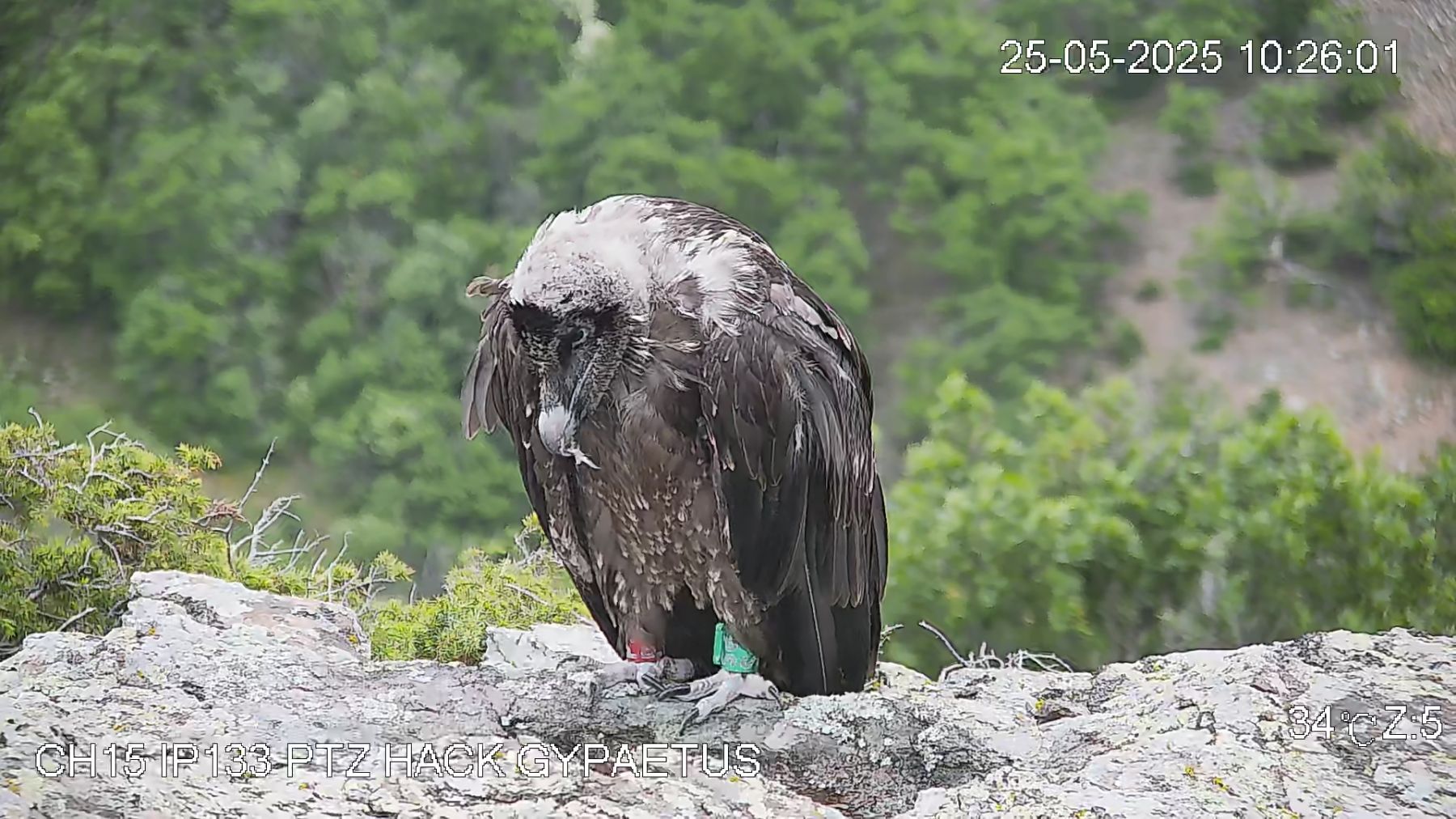
A significant event for Bearded Vulture conservation transpired in La Rioja, Spain – a pair laid a clutch in the wild, for the first time in over 70 years. This milestone occurred naturally with birds originating from the Pyrenees, marking the second natural recolonization away from the Pyrenees – the first was in the Moncayo mountains. In Spain, the species breeds in the Pyrenees (the stronghold of the species in Europe), Cazorla/Andalusia, and Picos de Europa – the latter two from reintroduction projects.
Bearded Vulture pair lays an egg in La Rioja, Spain
A pair of Bearded Vultures (Gypaetus barbatus), a species that had not reproduced in La Rioja since the 1950s, began breeding at the beginning of 2022 in the upper basin of the river Najerilla, specifically in the Sierra de Urbión, for the first time since the species’ extinction in the region.
The two birds originate from the Pyrenees, a 13-year-old male called Cenarbe and an eight-year-old female called Biescras, marked with a GPS transmitter by Gobierno de Aragón. This marking has provided a great deal of information on their movements, spatial behaviour and movements, which is very useful for monitoring them during the breeding period.
After signs of laying and incubation in January, the monitoring team observed strange behaviour by the pair and progressive abandonment of the nest in March. The Directorate General for Biodiversity decided to intervene and collect the egg to help enhance the chances of hatching. However, in the end, the egg did not hatch. Experts will perform an egg necropsy to determine the possible causes of breeding failure. It is important to note that breeding success is low in Bearded Vultures pairs attempting to breed for the first time. This species needs several years and accumulated experience in breeding to successfully fledge a chick.
The Iberian System is a suitable place for Bearded Vultures
The Iberian System mountain range is a very suitable area for the species, with the presence of rocky cliffs for nesting, mountain pastures in a very open landscape with extensive livestock farming, wild ungulates and abundant food resources.
In fact, numerous juveniles, and to a lesser extent adults, have frequented the area over the last 15 years on their dispersal journeys, and remain here for long periods of time, coming from the Pyrenees and other mountain massifs where reintroduction projects are taking place. Individuals from our reintroduction project in Maestragzo have also visited.
The northern Iberian System, the sierras of Demanda, Urbión, Cebollera and Cameros, offers suitable places for the settlement of the species in a natural process of dispersal from the Pyrenean populations. It is also a junction between ongoing reintroduction projects, like Maestrazgo and the Picos de Europa.
Well done to the stakeholders who participated in the monitoring process and actions against nest disturbance: Gobierno de La Rioja, Consejería de Sostenibilidad, Transición Ecológica y Portavocía del Gobierno, Gobierno de Aragón, Fundación para la Conservación del Quebrantahuesos (FCQ) and Dirección General de Biodiversidad.




